Harvest full grown cabbage (Cabbage maturity time) – Best time to harvest cabbage
How to grow cabbage in chemical-free cultivation. (Cabbage farming guide.) The cabbage that I started growing in late August is now ready to harvest. (Harvest full grown cabbage. Cabbage maturity time is from November to December.)

How to grow cabbage for beginner (Best way to grow cabbage)
Cabbage underwent soil preparation in late August. I started by loosening the soil because I was concerned that the summer heat had dried and hardened it, making it difficult for the cabbage to grow.
The compost and fertilizers used for growing cabbage are fully ripened cattle manure compost, chicken manure, and canola cake. This cabbage is grown through pesticide-free organic farming, so organic compost and fertilizers are used.
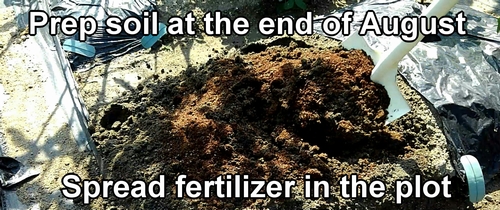
After preparing the soil for cabbage, we make bed. We grow cabbage using mulch cultivation, so we cover the bed with mulch sheet. (The benefits of mulch cultivation include preventing weeds, retaining soil warmth and moisture, and preventing nutrient runoff.)

The planting time for cabbage seedlings was mid-September. (The best time to plant cabbage is from early to mid-September.)
Cabbage planting tip is to handle the seedlings gently. Since young seedlings are still delicate, gently plant them to avoid breaking the stems.
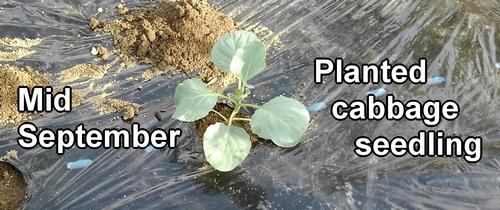
For autumn-planted cabbage, if the seedlings are planted late, the leaves may not form tightly even at the heading stage. Therefore, it’s important to plant them at the right time. Early to mid-September is the suitable time for planting winter cabbage in the autumn.
Cabbage belongs to the Brassica family and is a favorite vegetable of cabbage worms and aphids. To protect it from pests, we use grow tunnel. It’s important to do tunnel cultivation at the same time as planting cabbage to enhance pest control effectiveness.
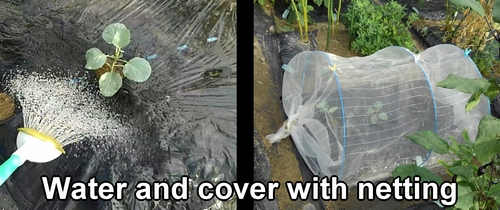
Cabbage is fertilized twice. The first time is about 3 weeks after planting in early October. The second time is in mid-November.

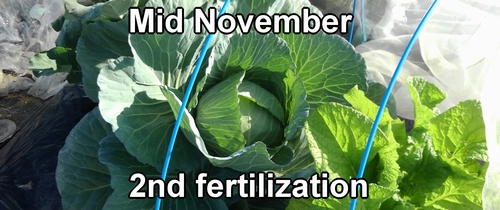
Cabbage needs nutrients for growth. Therefore, we supplement fertilizer with add-fertilizing.
If you give too much fertilizer to cabbage, it might split. So, we fertilize while watching its growth.
For vegetables like cabbage that are grown from seedlings, the time for add-fertilizing is about 3-4 weeks after planting. This season, there were two times for add-fertilizing, but usually, one time is enough. (The number of times for add-fertilizing depends on the weather of that year and the growth condition of the cabbage.)
Harvest winter cabbage plants (The best time to harvest autumn-planted cabbage is around November)
Before harvesting, I measured the cabbage head and it was about 20cm (8 inches) in diameter. When I measured it about 20 days ago, it was about 15cm (6 inches), so it has grown another 5cm (2 inches) since then.
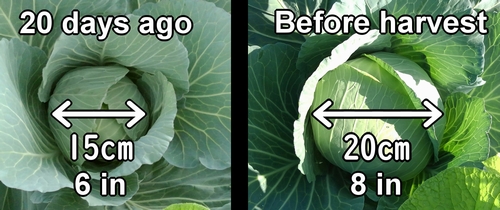
Best time to harvest cabbage. The method for harvesting cabbage is to take the whole plant. Cut it at the base with garden shears or a knife. If you don’t have garden shears, a knife or a large cutter will work too. If you can pull it out by the roots, that is also fine.
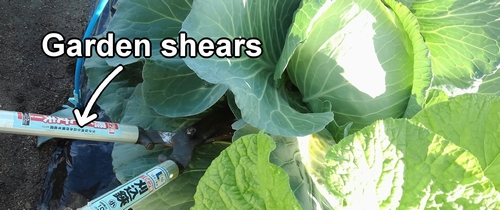
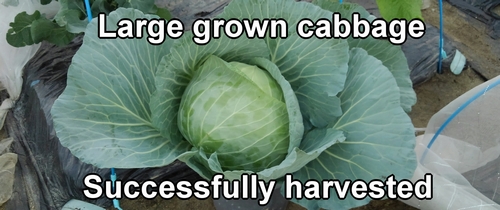
Cabbage is a versatile vegetable, so I look forward to enjoying it in various ways such as shredded or stir-fried.
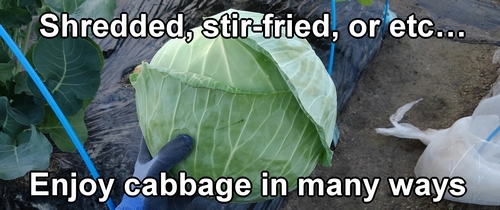
Following is the video for how-to. English subtitles are available.
















Discussion
New Comments
No comments yet. Be the first one!